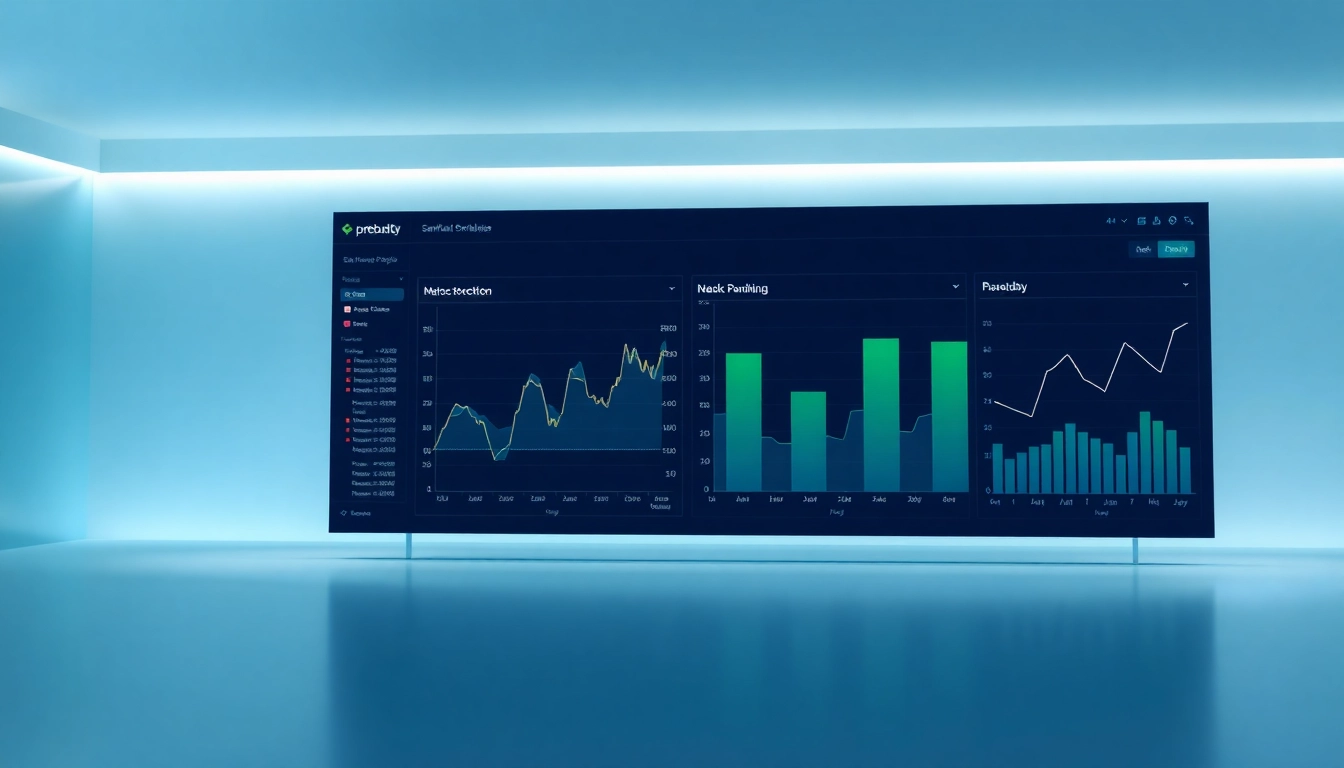Understanding AI Prompts for Competitor Analysis
In the ever-competitive marketplace, having a thorough understanding of your competitors is crucial for any business aiming to secure a strong market presence. Leveraging ai prompts for competitor analysis allows organizations not only to gather critical insights but also to make informed strategic decisions. This article dives deep into the world of AI-enhanced competitor analysis, detailing the types of prompts that can be employed effectively to yield actionable insights.
What are AI Prompts?
AI prompts are essentially queries or instructions that are inputted into an artificial intelligence model, such as ChatGPT, to retrieve specific information or analysis. These prompts guide the AI in understanding the context of the request and generating relevant, coherent responses. For instance, a prompt like “What are the strengths and weaknesses of Competitor X?” instructs the AI to generate a SWOT analysis for a specific competitor, providing clarity and insight in mere moments.
The Importance of Competitor Analysis
Competitor analysis serves to identify key market players, assess their strengths and weaknesses, and discover opportunities within the market. In today’s fast-paced and technology-driven world, relying on traditional methods of competitor analysis can be time-consuming and often inefficient. AI prompts enable businesses to quickly gather valuable data on market trends, consumer preferences, and competitor strategies. This not only informs product development and marketing strategies but also helps in optimizing pricing and enhancing customer relationships.
How AI Enhances Data-Driven Decisions
AI technology enhances the decision-making process by facilitating data collection and analysis at unprecedented speeds. With the ability to process vast amounts of information quickly, businesses can analyze market dynamics and make policy changes or strategic adjustments based on solid empirical evidence rather than speculation. This shifts the decision-making process from intuition-based to data-driven, resulting in improved business outcomes.
Types of AI Prompts for Competitor Analysis
Market Research AI Prompts
Market research AI prompts are designed to uncover trends, consumer behaviors, and competitive positioning. Examples of effective market research prompts include:
- Identify Emerging Trends: “What are the emerging trends in [industry] that competitors are capitalizing on?”
- Consumer Behavior Analysis: “Summarize the customer sentiment towards Competitor Y based on online reviews.”
- Market Gap Identification: “What gaps exist in the market according to current offerings from competitors?”
These prompts provide businesses with a comprehensive overview of the market landscape, allowing them to align their strategies effectively.
SWOT Analysis Prompts
SWOT analysis is a framework used to evaluate a company’s Strengths, Weaknesses, Opportunities, and Threats. AI can significantly streamline this process with tailored prompts such as:
- Strengths Assessment: “What are the competitive advantages of Competitor Z?”
- Weaknesses Identification: “Highlight the weaknesses or challenges faced by Competitor Z.”
- Opportunity Exploration: “What market opportunities could Competitor Z capitalize on?”
- Threat Analysis: “What external threats could impact the performance of Competitor Z?”
Using these prompts, organizations can attain a multi-faceted perspective on their competitors and adapt strategies to outperform them.
Comparative Product Analysis
Hiring product analysis AI prompts can help businesses compare their offerings against those of competitors. Well-constructed prompts can highlight differences in features, pricing, and customer satisfaction. Here are effective prompts for product analysis:
- Feature Comparison: “List the key features of Product A from Competitor X versus our Product B.”
- Pricing Strategy Analysis: “How does the pricing strategy of Competitor Y compare to ours?”
- Consumer Satisfaction: “What do customer reviews say about Competitor Z’s flagship product compared to ours?”
With these insights gleaned through AI analysis, companies can make informed decisions about their product development and marketing strategies.
Implementing AI Prompts Effectively
Creating Customized Prompts for Your Needs
To maximize the effectiveness of AI prompts, businesses should focus on customizing them to their specific needs and market conditions. Here are the steps to create tailored prompts:
- Define Objectives: Determine what information you need from the AI and why it is important for your business decisions.
- Utilize Specific Language: Use clear and concise language that directs the AI toward the specific insights required.
- Test and Refine: Experiment with different prompts and refine them based on the quality of the outputs received.
By iterating on prompts, businesses can deepen the relevance and accuracy of the AI-generated insights.
Best Practices for Using AI in Analysis
Maximizing the benefits of AI in competitor analysis requires adherence to certain best practices:
- Stay Current: Regularly update prompts to reflect changes in the market or shifts in consumer preferences.
- Verify Insights: Always double-check AI-generated data through traditional analytical methods or human oversight to ensure accuracy.
- Use Multiple Sources: When analyzing competitors, combine insights from various AI tools and databases to gather a well-rounded perspective.
Employing these best practices will enhance the overall effectiveness and dependability of AI in your competitor analysis.
Tools and Platforms for Prompt Execution
To implement AI prompts effectively, various tools and platforms can facilitate this process. Some popular AI platforms that help automate and enhance competitor analysis include:
- ChatGPT: An intuitive platform for generating insights based on input prompts.
- Google Cloud AI: Offers advanced data processing capabilities beneficial for analyzing large datasets.
- IBM Watson: An AI service that supports natural language processing and can be used for comprehensive competitor insights.
Choosing the right tools depends on the unique needs and budget of the business, but integrating AI into competitor analysis can yield significant benefits across the board.
Case Studies: Success with AI Prompts
Industry Examples of Effective Use
Many industries have begun relying on AI-driven insights to enhance their competitive strategies. For instance:
- Retail Sector: Major retailers leverage AI prompts to analyze consumer trends and competitors’ pricing strategies, allowing them to optimize their inventory and marketing campaigns based on real-time data.
- Technology Firms: Tech companies utilize AI to conduct comparative analyses of product features, helping them identify key differentiators in their product offerings.
Such practical implementations of AI prompts reflect their growing importance in strategic planning across various sectors.
Measuring Success with AI-Driven Insights
To effectively gauge the success of AI-generated insights, companies should implement measurement metrics such as:
- Sales Performance: Track improvements in sales figures post-implementation of AI-driven strategies.
- Customer Satisfaction: Monitor changes in customer feedback and satisfaction levels following modifications made based on AI insights.
- Competitive Positioning: Evaluate shifts in market share relative to competitors after implementing adjustments based on AI analyses.
Monitoring these metrics allows businesses to understand the tangible benefits of incorporating AI prompts into their decision-making processes.
Adapting Strategies Based on Results
The ability to pivot and adapt based on AI-driven insights is key to maintaining a competitive edge. Businesses should regularly evaluate the output of their AI prompts and adjust their strategies accordingly. For maximum impact, consider:
- Engaging in continuous improvement cycles where AI analyses inform regular strategic updates.
- Integrating feedback loops that allow insights to refine and evolve over time.
These strategies ensure that businesses remain agile and responsive to the ever-changing competitive landscape.
Challenges and Solutions in AI-Driven Analysis
Coping with Data Quality Issues
One of the primary challenges in utilizing AI for competitor analysis is dealing with data quality issues. Poor data can lead to inaccurate insights. To mitigate this challenge:
- Invest in data cleaning and enrichment processes to enhance reliability.
- Set up data validation measures to ensure the integrity of the data being analyzed.
By addressing data quality proactively, businesses can trust the insights derived from AI prompts more thoroughly.
Continually Updating AI Knowledge Bases
AI systems rely heavily on the datasets they have been trained on. Therefore, keeping these datasets up-to-date is crucial. Solutions include:
- Regularly feeding new information and trends into the AI’s training modules.
- Implementing a system for ongoing updates based on market developments and consumer behaviors.
An updated knowledge base ensures the AI models remain relevant and produce valuable insights.
Integrating AI Insights into Business Strategy
Finally, integrating AI-generated insights into core business strategies can pose challenges. Effective integration involves:
- Creating cross-departmental teams to ensure that insights are applied across marketing, product development, and customer service.
- Establishing frameworks for interpreting AI insights, enabling teams to make informed decisions clearly and based on solid evidence.
By cultivating a culture that embraces AI, companies can optimize their strategies and maintain a competitive edge across their operations.



